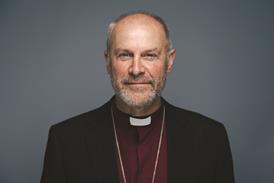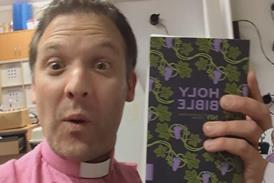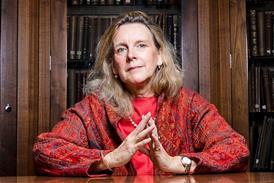Statistics don’t lie. A quarter of a million believers are part of the New Church movement. It has been the fastest growing part of the church in the UK in the last 30 years. At a time when church attendance in the UK has been falling, the New Church statistics have continued their upward climb.
But as we saw last month, the New Churches are at a crossroads. At their birth 30 to 40 years ago, they were known as ‘house churches’ - now the founding fathers are close to drawing their pension, while others have died or left the movement altogether. The church scene in the UK has changed markedly from the days when the early leaders called believers to leave their moribund denominations. No longer the strident separatists, the New Churches who helped stir other churches from their slumber, now find that in many cases they are almost indistinguishable from their denominational cousins. What’s more, the rate of their growth is slowing; church planting in some streams is negligible and there have been no major new streams since 1987. Some observers conclude that New Churches have had their day, and will soon be consigned to history as a splinter group, raised up by God for a season, but now giving way to the renewed denominations and the now newer expressions of church. Whether we are part of a New Church stream or not, we must be concerned that one of our most effective weapons in advancing the kingdom may be facing hard times.
Asked why ‘Restoring the Kingdom’ was the only book giving a comprehensive analysis of the history of the New Church Movement, the author Andrew Walker told Christianity+Renewal it was because of the sheer complexity of the subject matter, with over a dozen streams, things ever changing, and a high proportion of New Churches not part of any grouping. If it is tricky examining and analysing the past, it’s even harder to predict what happens next. Nevertheless, from talking to church leaders and observers from inside and outside the Movement, it is clear that New Church leaders need to face some key questions in the future; questions concerning identity, succession, relationship with others, and means of growth.
1. What sort of stream?
A movement that does not know what it stands for wouldn’t have made it four years, let alone 40. Charismatic worship, openness to the Spirit’s filling and gifting, a confidence in God’s power to make headway against evil - have all been norms. But having spoken of broad themes, it is hard to understand what specific New Church streams stand for. Why would you join a Pioneer-linked Church rather than a Vineyard Church? Is a church in a New Church stream much different from a Pentecostal or Charismatic Baptist Church?
John Finney, Chairman of Lee Abbey and former Anglican Bishop of Pontefract, in his book, The Fading Splendour, (DLT 2000 ISBN 0232522863), identified the typical cycles that exist in renewal movements from the New Testament times to the present day. From his research he suggests there are three possible fates awaiting groups involved in renewal: “Divide and divide again, so they become smaller and smaller; accept that they are a denomination like any other; disband and join back into the mainstream of the church.”
Rev Paul Weaver, General Superintendent of Assemblies of God (AOG) in the UK, which has around 60,000 members suggests that there are parallels between the Pentecostal movement and what the New Churches are facing.
“The Pentecostals, of which we are a part, had begun as a movement that had stressed the importance of the Holy Spirit in the early 20th century and had maintained that we were not a denomination. But we had to come to a point of examining who we were. Within the AOG we have sought to clarify our mission and values to realign ourselves for the next step of the journey. I think New Churches are in the same place today that we were 30 years ago. They have been defined in some cases by what they were against - what are they fighting for now?”
There is evidence that some of the New Church streams are aware of this need to restate what they stand for. Dave Holden is the Team Leader of the European Team of New Frontiers (the largest New Church stream in the UK). He told Christianity+Renewal: “New Church streams will soon have to discover that ‘family ties’ are not enough on their own. We now describe ourselves as a ‘family of churches on a mission’, and it’s that sense of being on a mission together that has given Newfrontiers a new sense of commission to grow and expand.”
In a kingdom sense it could be argued that it matters little whether New Church streams have a distinctive and different outlook from other evangelical/charismatic churches. But the health and momentum of a particular stream does depend upon the degree to which they are aware of who they are and where they are heading.
Charismatic evangelical Dave Roberts, former editor of Renewalmagazine, says it is it “no accident that a stream such as Newfrontiers, which has a clear understanding of its identity and direction, is also the one which is the largest and seeing the greatest growth.” As well as championing the moves of the Spirit in the last 30 years Newfrontiers has become known as a movement distinctive for their Calvinistic theology, belief that elders within church congregations should be male and a commitment to church planting.
Not all Newfrontiers churches are the same of course, and there is no suggestion they are coerced into a particular line, but they stand against churches within some other streams, which tend to have a more varied approach and practise within the framework of being an independent Charismatic Church.
The Pioneer network of churches led by Gerald Coates (numbering 92 churches), Salt and Light (formed by Barney Coomes – 62 churches), The Ground Level network of churches led by Stuart Bell (59 churches), and C.Net (formerly Cornerstone, headed up by Tony Morton – 49 churches) to name four, are networks of churches, based on relationship. They rarely exercise a party line on doctrine and practise outside of the broadly based Evangelical Alliance basis of faith. They have accountability networks and enjoy apostolic oversight. If there are vacancies for salaried roles within these churches, others from within the stream are often able to supply the successful applicant.
So does looseness of structure suggest they are in danger of stagnating as has been suggested? Sociologists argue that their loose structure with ill-defined boundaries is the sort of organisational style likely to thrive in a post-modern era, given the under-40s’ distrust of hierarchy and form.
Perhaps the ultimate irony is that many of the New Churches find themselves existing under a loose banner with other independent churches, under common leadership and free to have differing views on theology and doctrine. Not dissimilar in fact from the Church of England!
Of concern are Christian Research’s findings that 60% of the New Churches are not allied to any stream as such.
Roger Ellis, a leader of Revelation Church, Chichester, part of the Pioneer Network says: “Some have opted to centralise and structure around a central vision, others prefer to stay loose, and it is fair to say that some churches have deconstructed altogether and have essentially lost what we might call the ‘bread and butter’ essentials of the apostles’ doctrine, gathering for worship and evangelising.” For some of these the writing really is on the wall.
2. New navigators?
There are a multitude of streams because of a multitude of founding leaders. In some cases there were disagreements, in others the streams gathered around the church planting activities and other churches opted to join. What happens when the founding leaders pass on? Bryn Jones (formerly head of Covenant Ministries) died since the first part of this article was written. Is there a leadership crisis in New Church streams?
In reality while in many people’s minds many of the new streams and groupings have the same ‘heads’ as when they started (Terry Virgo at Newfrontiers, Gerald Coates at Pioneer People, Roger Forster at Ichthus Christian Fellowship, Tony Morton at C.net for example) the leadership structures in some of these networks allow for a considerable amount of the strategic leadership to be in the hands of other team members.
Steve Thomas, leader of the Salt and Light Ministries, European Apostolic Team, who also leads the local apostolic team of Oxfordshire Community Churches, told Christianity+Renewal: “For some time we have tended to focus on team ministry rather than looking for someone to take on the founder, Barney Coomes’ role (he has moved to Canada). We believe that when we consider the breadth of the work, team is the only route.”































